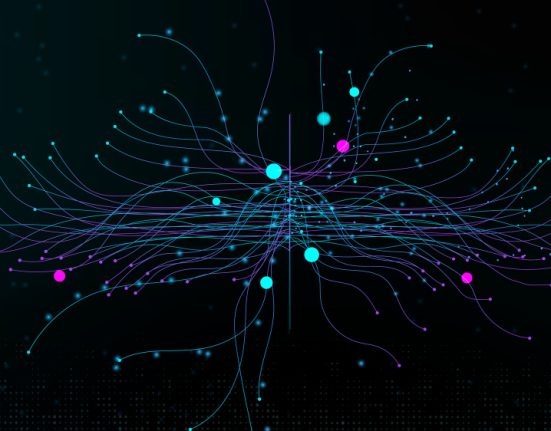Computer vision is a subset of AI that enables machines to analyze, understand, and make decisions based on visual data from the world. This data can come in various forms, such as photographs, videos, or live camera feeds. The goal is to replicate the human ability to process and interpret visual information but at a scale and speed unattainable by humans.
At its core, computer vision relies on advanced algorithms, deep learning techniques, and neural networks. These systems process images by breaking them down into pixels and identifying patterns within these pixels. Over time, the AI learns to recognize objects, actions, and even subtle differences, such as the early signs of disease in medical scans.
The Building Blocks of Computer Vision
- Image Acquisition: The first step involves capturing or collecting visual data through cameras, sensors, or other imaging devices.
- Preprocessing: Raw visual data often needs refinement. Preprocessing involves steps like noise reduction, color correction, and resizing to ensure consistency.
- Feature Extraction: Key features—such as edges, textures, or specific shapes—are identified to make sense of the image.
- Classification and Recognition: Using trained models, the system classifies objects within the image. For example, it may identify a car, a tree, or a human face.
- Decision Making: Based on the analysis, the system provides output or takes specific actions, such as raising an alert or suggesting a diagnosis.
Applications in Surveillance
One of the most significant applications of computer vision is in surveillance. The demand for smarter, more efficient security systems has driven advancements in this area. AI-powered surveillance systems can monitor large areas, detect unusual activities, and even recognize faces in real-time.
Key Features of AI in Surveillance
- Facial Recognition: Computer vision systems can match faces captured on cameras to databases, enhancing security in public spaces like airports or stadiums.
- Behavior Analysis: AI can detect anomalous behavior, such as a person loitering in restricted areas or abandoning an object.
- Real-Time Monitoring: With real-time processing capabilities, systems can alert authorities instantly about potential threats, reducing response times.
Ethical Considerations
Despite its benefits, the use of computer vision in surveillance raises ethical concerns. Issues around privacy, data security, and potential misuse require robust regulations to ensure responsible use.
Revolutionizing Medical Imaging
Another groundbreaking application of computer vision is in healthcare, particularly in medical imaging. By analyzing X-rays, MRIs, and CT scans, AI assists doctors in diagnosing diseases with greater accuracy and efficiency.
How Computer Vision Transforms Healthcare
- Early Detection: AI systems can detect diseases like cancer in their early stages, providing a better chance for successful treatment.
- Enhanced Accuracy: By identifying patterns that might be missed by the human eye, computer vision improves diagnostic precision.
- Workflow Optimization: Automation of repetitive tasks, such as sorting and analyzing images, allows medical professionals to focus on patient care.
Real-World Applications
- Cancer Detection: AI algorithms can analyze mammograms and detect abnormalities with a high degree of accuracy.
- Retinal Imaging: Computer vision helps identify conditions like diabetic retinopathy and glaucoma early, preventing vision loss.
- Surgical Assistance: AI-powered systems guide surgeons by providing real-time visual analysis during operations.
The Challenges Ahead
While the potential of computer vision is vast, it faces several challenges:
- Data Quality: AI systems require vast amounts of high-quality data for training. Poor-quality data can lead to inaccurate results.
- Computational Costs: Training and deploying complex models demand significant computational resources, which can be expensive.
- Ethical and Privacy Concerns: The collection and use of visual data raise issues around consent and misuse, particularly in sensitive areas like surveillance and healthcare.
- Bias in AI Models: If training data is not diverse, AI systems can develop biases, leading to unfair outcomes in applications like facial recognition.
The Future of Computer Vision
As technology continues to advance, the applications of computer vision are set to expand. Emerging trends include:
- Augmented Reality (AR): Computer vision will play a crucial role in enhancing AR experiences, from gaming to remote work.
- Autonomous Vehicles: Self-driving cars rely heavily on computer vision to navigate, detect obstacles, and make real-time decisions.
- Environmental Monitoring: AI systems can analyze satellite images to track deforestation, urbanization, and climate change impacts.
Conclusion
Computer vision is more than just a technological marvel; it is a tool that is reshaping industries and improving lives. From enhancing public safety through advanced surveillance to revolutionizing healthcare with accurate diagnostics, the impact of computer vision is profound. However, as we embrace this technology, it is crucial to address the ethical and logistical challenges it presents to ensure its benefits are realized responsibly. As AI continues to evolve, the world of computer vision will undoubtedly see even greater innovations, unlocking possibilities we can only imagine today.














Leave feedback about this